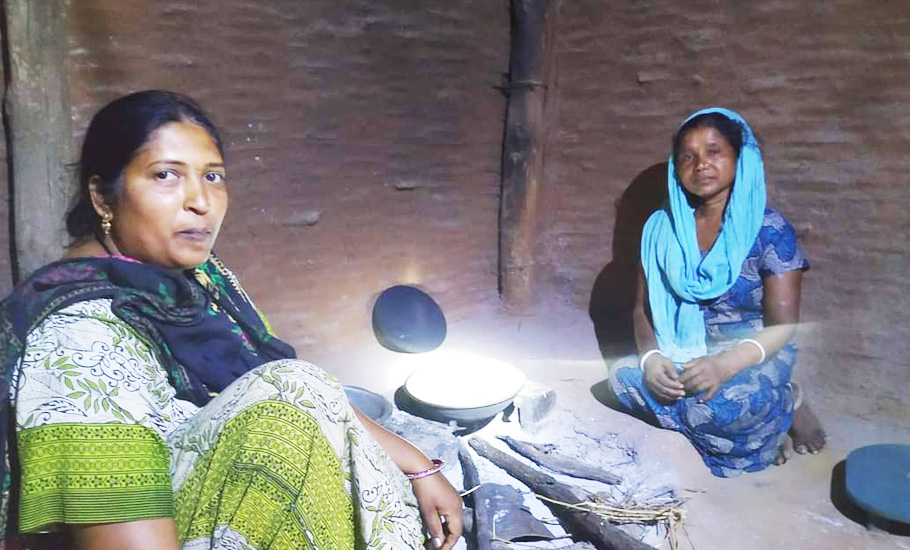
- Home
- News
- Analysis
- States
- Perspective
- Videos
- Education
- Entertainment
- Elections
- World Cup 2023
- Features
- Health
- Budget 2024-25
- Business
- Series
- NEET TANGLE
- Economy Series
- Earth Day
- Kashmir’s Frozen Turbulence
- India@75
- The legend of Ramjanmabhoomi
- Liberalisation@30
- How to tame a dragon
- Celebrating biodiversity
- Farm Matters
- 50 days of solitude
- Bringing Migrants Home
- Budget 2020
- Jharkhand Votes
- The Federal Investigates
- The Federal Impact
- Vanishing Sand
- Gandhi @ 150
- Andhra Today
- Field report
- Operation Gulmarg
- Pandemic @1 Mn in India
- The Federal Year-End
- The Zero Year
- Premium
- Science
- Brand studio
- Home
- NewsNews
- Analysis
- StatesStates
- PerspectivePerspective
- VideosVideos
- Entertainment
- ElectionsElections
- Sports
- Loading...
Sports - Features
- Budget 2024-25
- BusinessBusiness
- Premium
- Loading...
Premium

The truth of development for tribal populations under Gujarat model

In August 2021, when a 25-year-old Aabha (name changed) complained of uneasiness and pain in the stomach early in her pregnancy, the family tried to bring her some relief using home remedies at the Mathasar village in Dediapada taluka of Narmada district. After momentary relief, the pain and uneasiness returned for Aabha with increased vigour. By then a few neighbours had gathered at...
In August 2021, when a 25-year-old Aabha (name changed) complained of uneasiness and pain in the stomach early in her pregnancy, the family tried to bring her some relief using home remedies at the Mathasar village in Dediapada taluka of Narmada district. After momentary relief, the pain and uneasiness returned for Aabha with increased vigour. By then a few neighbours had gathered at Aabha’s house. It was clear she had to be taken to hospital without any delay. What stood in the way of the village and the hospital was incessant rain and Dev river in spate.
The villagers quickly arranged a bedsheet, tied both its ends to a wooden staff, turning it into a makeshift stretcher. They put Aabha in it and began the arduous journey to the hospital with four men carrying the ‘stretcher’ on their shoulders. They shifted the staff from one shoulder to the other to ease the pain as they walked on land. But when it came to crossing the 70-feet wide Dev river, they knew they couldn’t take any risks. So they just crossed the river precariously as their shoulders went numb with the pain. On the other hand, hanging in in the uncomfortable ‘stretcher’, Aabha’s condition had only worsened.
The ritual of enduring hardships to reach the hospital is, however, routine during monsoons not just for the residents of Mathasar village, but also Kanji and Vandari villages, which are dominated by tribals. Every year, the villages are cut off during monsoon from the rest of the taluka when a causeway on Dev river is submerged.
The three villages surviving administrative neglect are located about six to eight kilometres from the 182-metres high Statue of Unity, built as a cost of Rs 6,000 crore and touted as a global tourist spot, in Kevadiya village, in Narmada district.
The nearest medical facility from Mathasar, the largest of the three villages, is a primary health centre about 28 kms away in Mosda. Villagers of Mathasar cross the causeway on Dev river and then a bridge on Tarawali river to reach Mosda. The nearest hospital from the village is at district headquarter Rajpipla, about 35 kilometres away.

Every year before monsoon hits, Narmada district administration asks the residents of these three villages to admit expecting women to the only hospital in the taluka before the causeway submerges.
“These three villages are extremely underdeveloped despite being so near to the Statue of Unity where crores have been spent for tourism. We made several representations to various local authorities. It was only last year that work for the new bridge began after the then local MLA Mahesh Vasava allocated a fund,” Chaiter Vasava, a local resident, told The Federal.
Tribals form about 15 per cent of the total electoral population of Gujarat. Apart from 27 out of 182 assembly seats that are reserved for scheduled tribes, tribals spread across south and central Gujarat, form a decisive vote bank in 14 unreserved seats.
With most of these constituencies being extremely underdeveloped, basic issues such as water, road, forest land and price rise are raised ahead of any election.
In villages of Tapi district, women walk up to 3 km every week to the forest to chop wood for cooking as they cannot afford LPG cylinders. Most households can afford to refill only about two cylinders per year given to them free of cost under the much publicised Pradhan Mantri Ujjwala Yojana.
“After chopping the woods, we carry one bhara on our head which weighs about 20-25 kgs back to the village to be used for cooking on chulha, an earthen stove that we, women make ourselves,” said Jainaben Gamit, a resident of Jhakri village in Tapi.
Tired of tall electoral promises unmatched by delivery on the ground by the government, in the assembly elections of 2017, two villages under Valsad seat had boycotted the elections.
In 2020, another village in Valsad boycotted the by-elections after the long-standing demand of mobiles for students in Tarmaliya village of Pardi taluka went unheard. There was anger on the ground as students had to travel 3 kms amid a raging Covid pandemic for internet connection to join online classes.

In March 2021, Kesar village in Bharuch, dominated by tribals, boycotted the local body polls over the long-pending demand for a bridge over river Kim. In the absence of a bridge, villagers, including children, have been crossing the river by foot to reach schools or the primary health centre in the neighbouring village. Residents of Targol, a village in Chhota Udepur constituency, also boycotted the local polls in 2021 as a protest against lack of proper roads in the village.
While the BJP, despite being in power for close to 27 years, has failed to ensure basic amenities in tribal belts, close observers say, it has been running its ‘Hindutva agenda’ rather concertedly.
“As an electoral population, the tribal belt has been a weak spot for the BJP. For years, the party has engaged in a systematic process of social and political infiltration camouflaged as cultural influence through sister organisations like the Rashtriya Swayamsevak Sangh [RSS] and other right wing organisations. There has been a rise in visits by Hindu godmen and events like Ram katha in the tribal districts. This is one of their ways to replace tribal culture by Hinduism,” Romel Sutariya, a tribal rights activist, said.
“It is an integral part of tribal culture to worship ancestors by laying a stone in their memory. These stones are being painted saffron and small temples are being built around these stones. Another phenomenon is systematic rise of Hanuman mandirs in the tribal districts,” Sutariya added.
In October 2021, the Gujarat government announced a financial aid of Rs 5,000 to each tribal person who wants to undertake a pilgrimage to Ram Janmbhoomi in Ayodhya.
Explaining the rationale of the scheme, Prime Minister Narendra Modi had said, “Since we, one crore people of Gujarat, are direct descendent of Mata Shabri who was a Ram devotee, all tribals will be given a financial aid of Rs 5000 to visit Ayodhya.”
In 2017 assembly polls, out of the 27 reserved seats, the Congress had won 15, Bharatiya Tribal Party (BTP) had won 2 and the BJP had bagged nine. However, in the local polls in December 2021, the Congress faced a debacle losing all its tribals seats to the BJP. This time, the party is banking on its tribal face, Anant Patel, to regain the foothold in tribal constituencies.
The 42-year-old sitting MLA had earlier led the protests against the Bharatmala Pariyojna, forcing the government to suspend the land acquisition for the project. According to the Ministry of Road Transport and Highways, “The Bharatmala Pariyojana envisages development of about 26,000 km length of Economic Corridors, which along with Golden Quadrilateral (GQ) and North-South and East-West (NS-EW) Corridors are expected to carry majority of the Freight Traffic on roads.”
Patel led over 15,000 tribals from south Gujarat to a massive meeting at Chikhli taluka of Navsari district in 2019, against the land acquisition plan of the BJP-led Union government for the Bharatmala Pariyojna.
Later in April 2022, the government had to stall another Union scheme, Par Tapi Narmada river-linking project, after about 5,000 tribals gathered in Gandhinagar, state capital in March 2022 under the leadership of Patel.

But as all three major political parties vie for majority in Gujarat, none can afford to ignore over 15 per cent of the population of the state that the tribal minority accounts for as it has the potential to significantly influence electoral fortunes.
Whether the Congress can capitalise on the anger of the tribal population arising of neglect and denial of basic amenities, or the AAP can emerge as a disruptor, or the BJP can manage to succeed in once again winning tribal votes is something which will become clear only on December 8.

